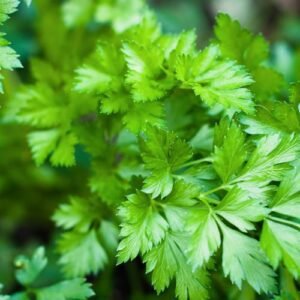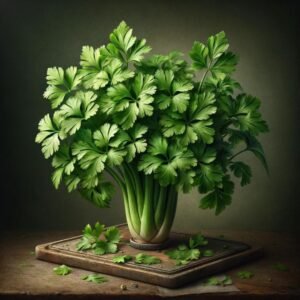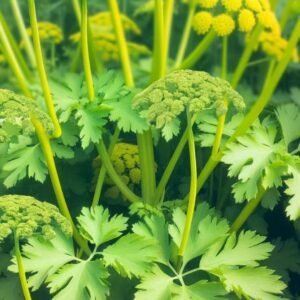Common Chives, scientifically known as Allium schoenoprasum, are a small perennial plant belonging to the Amaryllidaceae family, closely related to onions. Originating from Europe, Asia, and North America, chives are the only species of Allium native to both the New and Old Worlds. They are widely cultivated for their attractive flowers and flavourful leaves. Chives grow as bulb-forming herbaceous perennials, reaching 30-50 cm in height. Their leaves are hollow and tubular, resembling grass, and they produce pale purple, star-shaped flowers with six petals. These flowers are highly attractive to pollinators like bees. In the kitchen, chives are valued for their mild onion-like flavour and are commonly used in omelets, fish dishes, potatoes, soups, and salads. The edible flowers can also be added to salads.
Starting Chives from Seed:
Starting Indoors: Begin 6-8 weeks before the last expected frost. Use a seed starting mix in small pots or a seed tray. Sow seeds shallowly, about ¼ inch deep. They need light to germinate, so do not cover them completely with soil.
Germination: Place the tray in a warm, well-lit area. The ideal germination temperature is around 60-70°F (15-21°C). Keep the soil moist but not waterlogged. Germination usually occurs within 2-3 weeks.
Light Requirements: Once sprouted, ensure seedlings receive plenty of light. A south-facing window or grow light can be used to provide adequate light.
2. Transplanting and Growing On:
Hardening Off: Before transplanting outdoors, acclimate the seedlings to outdoor conditions over a week. Gradually increase their time outside each day to harden them off.
Transplanting: After the danger of frost has passed, transplant seedlings to your garden. Choose a sunny spot with well-draining soil. Space plants about 4-6 inches apart.
Watering: Water regularly to keep the soil evenly moist. Chives do not require a lot of water once established but do not let them dry out completely.
Fertilizing: Use a balanced, all-purpose fertilizer sparingly. Over-fertilization can reduce the flavor of the chives.
3. Care and Harvesting:
Harvesting: Begin harvesting when the plants are at least 6 inches tall. Cut leaves down to the base of the plant, leaving about 1-2 inches so they can regrow.
Flowering: Allow some plants to flower; their purple blossoms are edible and attract pollinators. Deadhead spent flowers to encourage more leaf growth.
Pests and Diseases: Chives are relatively pest-free but watch for aphids. Fungal diseases can be avoided by not overcrowding plants and ensuring good air circulation.
4. Preserving Chives:
Freezing: Chives can be frozen. Chop the leaves finely and place them in an airtight container or freeze them in ice cube trays with water.
Drying: To dry chives, hang bunches in a warm, well-ventilated area out of direct sunlight. Once dry, crumble the leaves and store them in an airtight container.
Refrigeration: Fresh chives can be stored in the refrigerator. Wrap them in a damp paper towel and place them in a plastic bag.
5. Culinary Use:
Chives can be used fresh or dried in a variety of dishes. They pair well with eggs, potatoes, salads, and are commonly used as a garnish.











Reviews
There are no reviews yet.